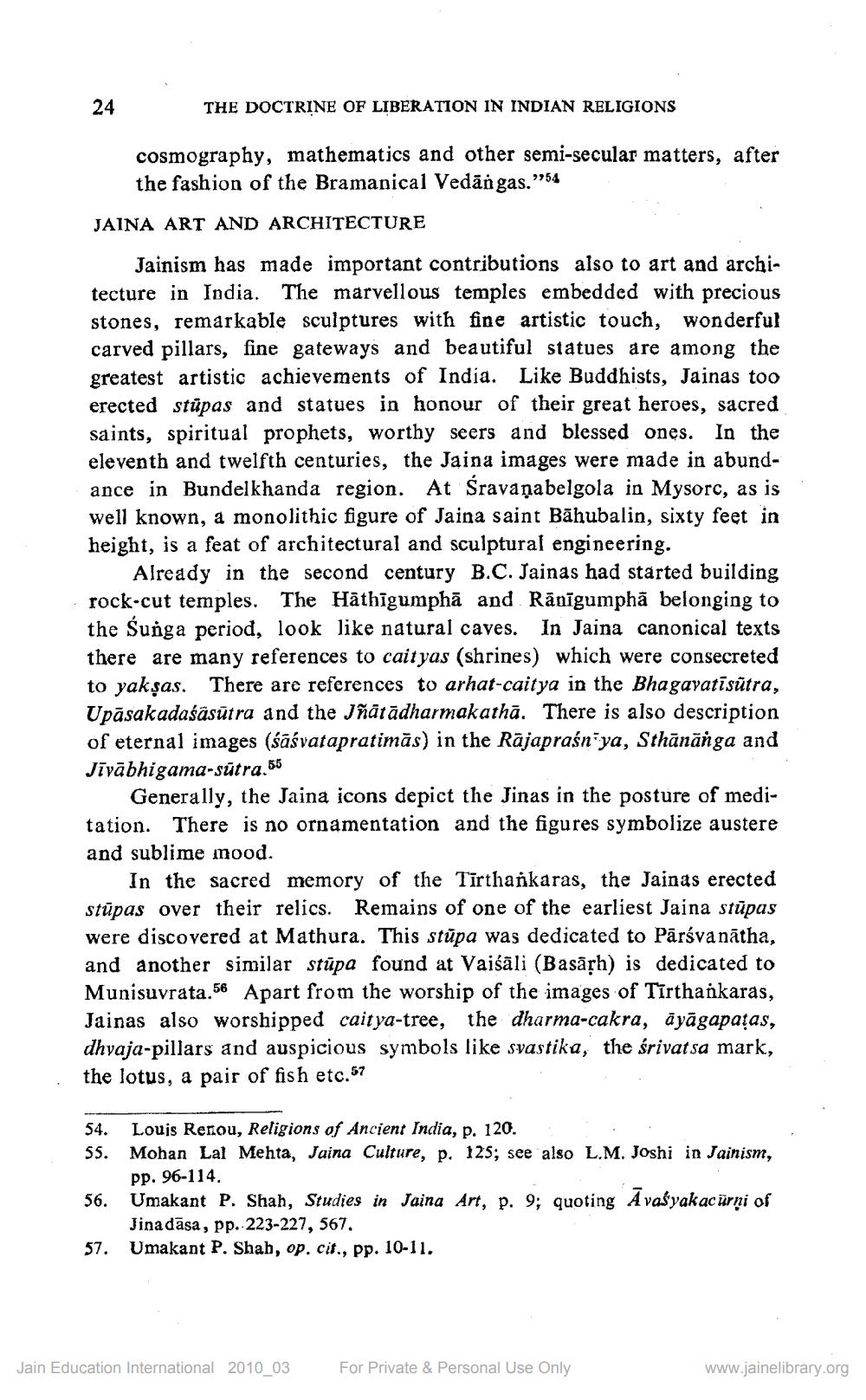________________
24
THE DOCTRINE OF LIBERATION IN INDIAN RELIGIONS
cosmography, mathematics and other semi-secular matters, after the fashion of the Bramanical Vedāngas.”54
JAINA ART AND ARCHITECTURE
Jainism has made important contributions also to art and architecture in India. The marvellous temples embedded with precious stones, remarkable sculptures with fine artistic touch, wonderful carved pillars, fine gateways and beautiful statues are among the greatest artistic achievements of India. Like Buddhists, Jainas too erected stupas and statues in honour of their great heroes, sacred saints, spiritual prophets, worthy seers and blessed ones. In the eleventh and twelfth centuries, the Jaina images were made in abundance in Bundelkhanda region. At Sravanabelgola in Mysorc, as is well known, a monolithic figure of Jaina saint Bāhubalin, sixty feet in height, is a feat of architectural and sculptural engineering.
Already in the second century B.C. Jainas had started building rock-cut temples. The Hāthīgumphā and Rānīgumphā belonging to the Sunga period, look like natural caves. In Jaina canonical texts there are many references to caityas (shrines) which were consecreted to yaksas. There are references to arhat-caitya in the Bhagavatīsūtra, Upāsakadaśasutra and the Iñātādharmakathā. There is also description of eternal images (śāśvatapratimās) in the Rājapraśn'ya, Sthānānga and Jīvābhigama-sūtra.55
Generally, the Jaina icons depict the Jinas in the posture of meditation. There is no ornamentation and the figures symbolize austere and sublime mood.
In the sacred memory of the Tīrthankaras, the Jainas erected stūpas over their relics. Remains of one of the earliest Jaina stūpas were discovered at Mathura. This stūpa was dedicated to Pārsvanātha, and another similar stūpa found at Vaiśāli (Basāșh) is dedicated to Munisuvrata.56 Apart from the worship of the images of Tīrthankaras, Jainas also worshipped caitya-tree, the dharma-cakra, āyāgapatas, dhyaja-pillars and auspicious symbols like svastika, the śrivat sa mark. the lotus, a pair of fish etc.57
54. Louis Renou, Religions of Ancient India, p. 120. 55. Mohan Lal Mehta, Jaina Culture, p. 125; see also L.M. Joshi in Jainism,
pp. 96-114. 56. Umakant P. Shah, Studies in Jaina Art, p. 9; quoting Avašyakacürni of
Jinadāsa, pp. 223-227, 567. 57. Umakant P. Shah, op. cit., pp. 10-11.
Jain Education International 2010_03
For Private & Personal Use Only
www.jainelibrary.org




